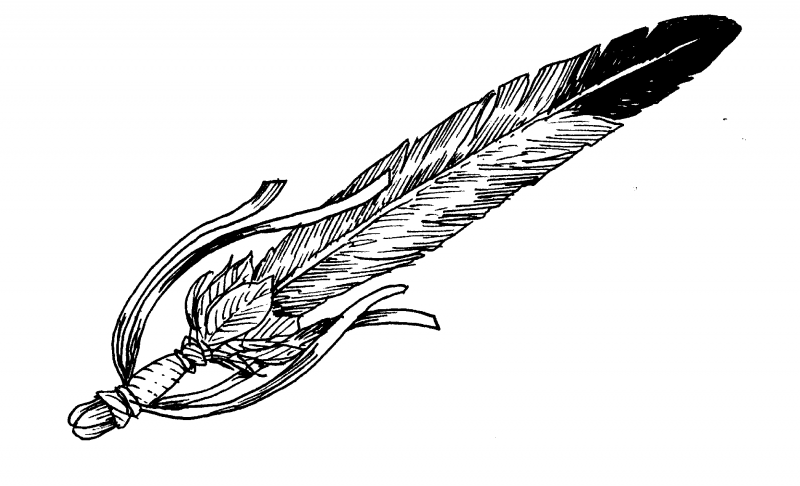In our story, my great-great-grandmother Eva Payne Brooks was half Iroquois. We didn’t know of what tribe, or what relationship her unmarried parents had. We knew she had light brown skin and came from a place called Indian Lake. My mother described, without irony, the long, dark braid she used to wear down her back. My second cousin told me years ago that there had been proof of Eva’s ancestry—papers of some kind, letters, or photographs—that Eva’s daughter had intentionally destroyed.
At the lake in the Adirondacks where we spent every August, I used to swim out into the middle, surrounded by blunted eastern mountains, pines straight as arrows, patches of gray rock face. I would imagine the lake as an empty green valley, the base of it far below, filling slowly with water from year to year. I saw myself suspended, legs dangling hundreds of feet from the place where the mountains met, and hundreds of feet still below their peaks.
As I grew older, there was a suspicious ease to it all: an English family crest and a blood claim on the American woods. If it were true, why did we have so little to tell? If my great-great-great-grandfather was an American Indian, who was he?
So in the summer of 2012, I drove north—or really west, north, and up in elevation and isolation—from that same spot at the lake, headed to the town where Eva Brooks was born.
In the northern Adirondacks, unless you’re driving down a town’s tiny main drag (you’ll know it by its closed-down soda shop, single gas station, orphaned barber poll, Grand Union) or crossing over water, you’re surrounded by thick forest. At first it was mostly tall pines and some birches.
As I drove, I passed Loon Lake, where beaten white farmhouses for sale and rent sat precariously close to the road after a century or two of route expansion. In case one couldn’t tell, rental signs insisted that they were indeed near lake!
I passed a garage with two side-by-side reader boards advertising rustic furniture / slabs / burls / sawing and minerals / fossils / beads.
I passed the welcome sign for the strangely named hamlet of Riparius, and crossed a small river—around a hundred yards across—realizing on the other side that it had been the Hudson. There were abandoned stone wells almost hidden in former yards, and a one-story-high rocking chair made of northern hardwood trunks sitting alone at the edge of the road. I passed a few eighteen-wheelers, and swamps and wetlands, and it began to rain. The trees became shorter and straighter—bristly mountain conifers. You would know just from looking at them that you were getting to the top...
You have reached your article limit
Sign up for a digital subscription and continue reading all new issues, plus our entire archives, for just $1.50/month.
Already a subscriber? Sign in





